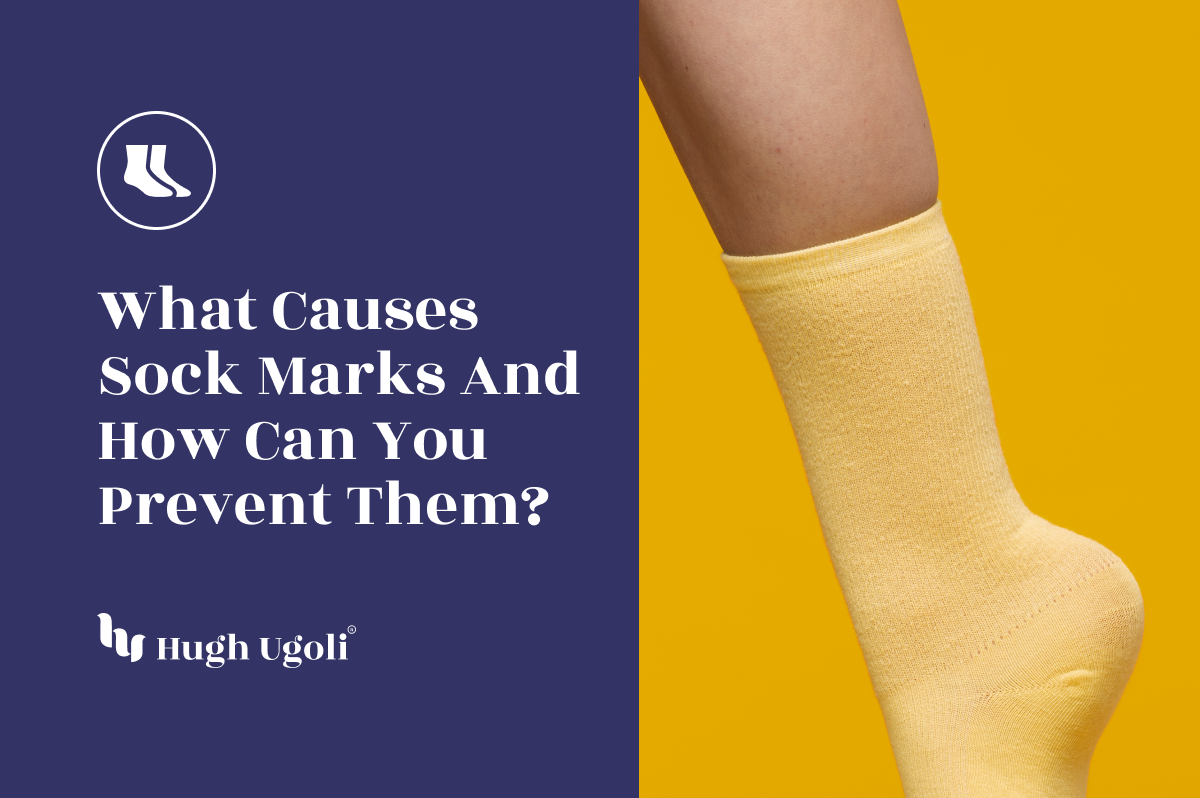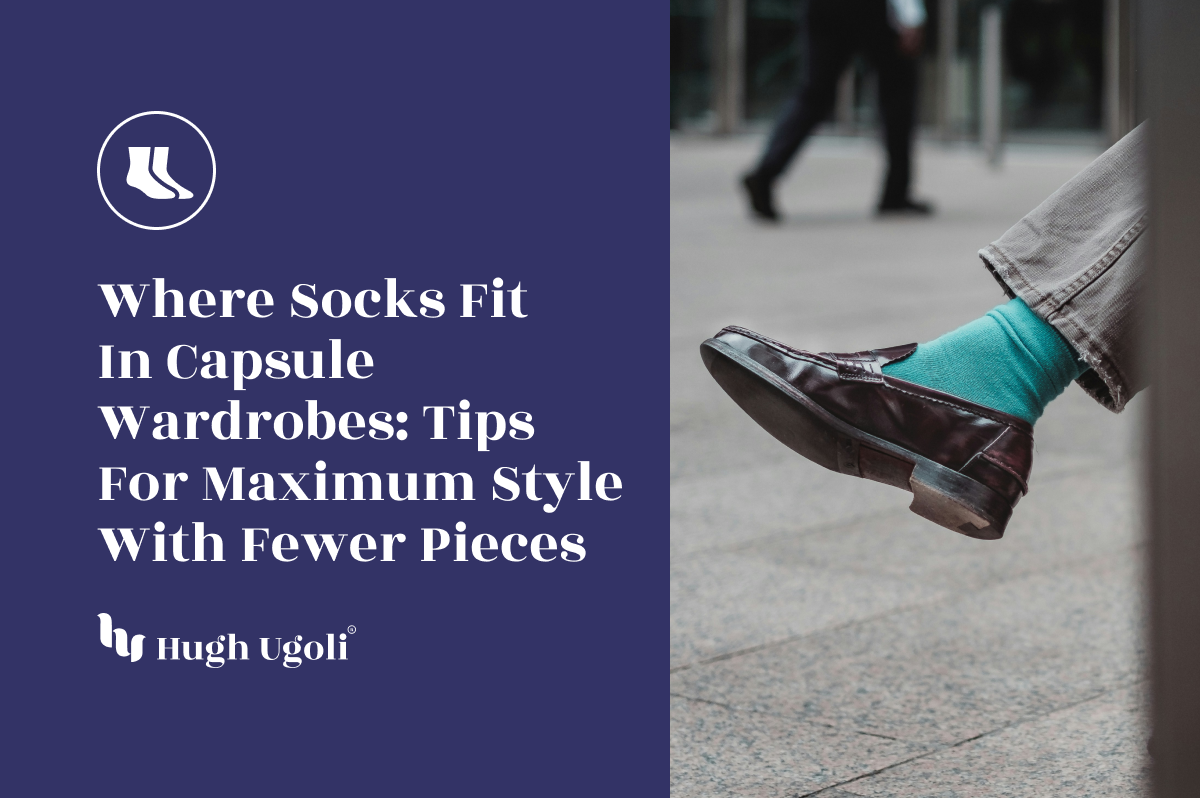We've all noticed those indentations left on our legs after taking off socks, especially after a long day. While sock marks are usually harmless, they can sometimes be a sign of underlying issues like leg swelling or poor circulation. Understanding the causes of sock marks and how to prevent them can help you determine when they’re normal and when you might need to take action.
1. What Causes Sock Marks?
Sock marks are indentations left on your legs where the elastic of the socks has compressed your skin. They are typically caused by tight-fitting socks that press against your skin and leave a mark. However, there are times when these marks could indicate other factors at play, such as leg swelling or fluid retention.
Here are some common reasons for sock marks:
-
Leg Swelling (Peripheral Edema): Swelling in the legs, also known as peripheral edema, occurs when excess fluid builds up in the tissues. This swelling can cause your socks to leave marks as the skin becomes more sensitive and prone to indentation. Leg swelling is common and may occur after standing for long periods or sitting for too long.
-
Fluid Retention: Fluid retention in the legs and feet is another common cause of sock marks. This can happen for various reasons, including high sodium intake, prolonged sitting or standing, and certain medications. When fluid accumulates, it increases pressure in the tissues, making it easier for socks to leave marks.
-
Venous Insufficiency: Venous insufficiency occurs when the leg veins are unable to properly return blood to the heart, leading to fluid buildup and swelling. This can make sock marks more prominent. Venous insufficiency can cause other symptoms like varicose veins, aching legs, and a heavy sensation in the legs.
-
Kidney or Liver Disease: Conditions like kidney disease or liver disease can lead to fluid retention in the legs, making sock marks more noticeable. When the kidneys or liver are not functioning properly, they may not remove excess fluid from the body effectively, causing swelling.
-
Congestive Heart Failure: In more serious cases, congestive heart failure can cause peripheral edema, leading to sock marks on the legs. This occurs when the heart is unable to pump blood efficiently, causing fluid to back up in the legs and feet.

2. When Are Sock Marks a Cause for Concern?
While sock marks are often harmless, they can occasionally be a sign of an underlying medical condition. If you notice that sock marks are accompanied by other symptoms such as persistent swelling, pain, or skin changes, it’s essential to consult a healthcare provider. Conditions like venous insufficiency, kidney disease, or congestive heart failure could be contributing factors and may require treatment.
Here are signs that your sock marks may warrant further investigation:
- Persistent swelling that doesn’t go away after resting
- Swelling accompanied by shortness of breath or chest pain
- Changes in skin color or texture around the area of the sock marks
- Pain in the legs or feet
3. How to Prevent Sock Marks
If you find that socks frequently leave marks on your legs, there are a few ways to minimize this:
-
Choose the Right Socks: Opt for socks that aren’t too tight and have softer, more flexible elastic bands. Compression socks can be a good option for those with leg swelling or circulation issues. Compression socks help improve blood flow and reduce fluid retention in the legs, preventing marks and promoting better circulation.
-
Wear Compression Socks: If you suffer from leg swelling or venous insufficiency, wearing compression socks can prevent sock marks by promoting blood flow and reducing fluid buildup in the legs. These socks are designed to gently compress the legs, encouraging proper circulation and helping to reduce swelling.
-
Elevate Your Legs: Elevating your legs at the end of the day can help reduce swelling and fluid retention. By raising your legs above heart level, you can help blood flow return to the heart and prevent fluid from pooling in your lower extremities.
-
Avoid Prolonged Sitting or Standing: Sitting or standing for long periods without movement can contribute to swelling and sock marks. Make sure to take breaks, stretch, and move around to encourage circulation.
-
Maintain a Healthy Diet: A diet that is low in sodium and rich in fruits, vegetables, and whole grains can help reduce fluid retention and improve overall circulation. Staying hydrated is also key to preventing swelling and sock marks.
4. Underlying Health Conditions and Sock Marks
In some cases, sock marks may indicate underlying health conditions that require attention. Conditions like liver disease, kidney disease, and congestive heart failure can lead to fluid retention and swollen legs, causing your socks to leave marks.
-
Venous Insufficiency and Varicose Veins: If your legs regularly swell and develop varicose veins, you may be dealing with venous insufficiency. In this condition, the leg veins struggle to send blood back to the heart, causing fluid to accumulate in the lower extremities. This can lead to more prominent sock marks, especially if you’ve been standing or sitting for long periods.
-
Kidney or Liver Disease: Conditions like kidney disease or liver disease can lead to fluid buildup in the legs, causing swelling and sock marks. These conditions can reduce the body's ability to remove excess fluid, leading to peripheral edema.
Conclusion: Sock Marks and Your Health
Sock marks are often harmless and simply a result of tight-fitting socks, but they can also indicate underlying conditions like leg swelling, fluid retention, or venous insufficiency. If sock marks are a regular occurrence for you, consider adjusting your sock choice or elevating your legs to reduce swelling. For those with more serious symptoms, such as persistent swelling, pain, or changes in skin texture, consulting a healthcare provider is essential to rule out any underlying health issues.
For more insights on maintaining foot health, check out our blog on What Are The Healthiest Socks For Your Feet? Where we discuss how the right socks can provide relief from common foot issues.
















